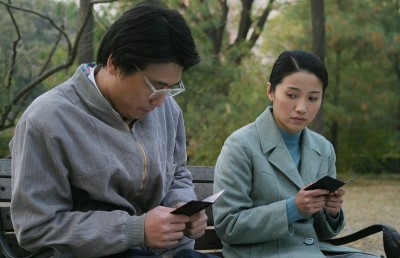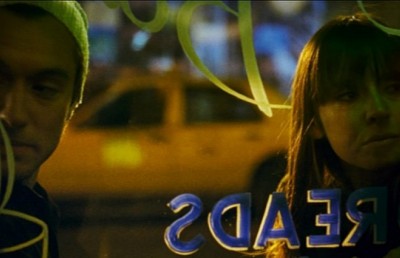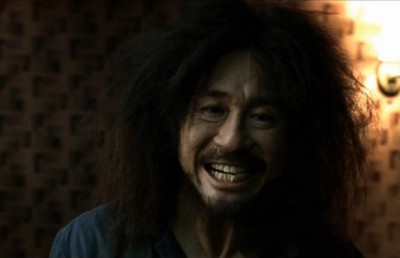Postsocialist Grit: Contending Realisms in Jia Zhangke’s Platform and Unknown Pleasures
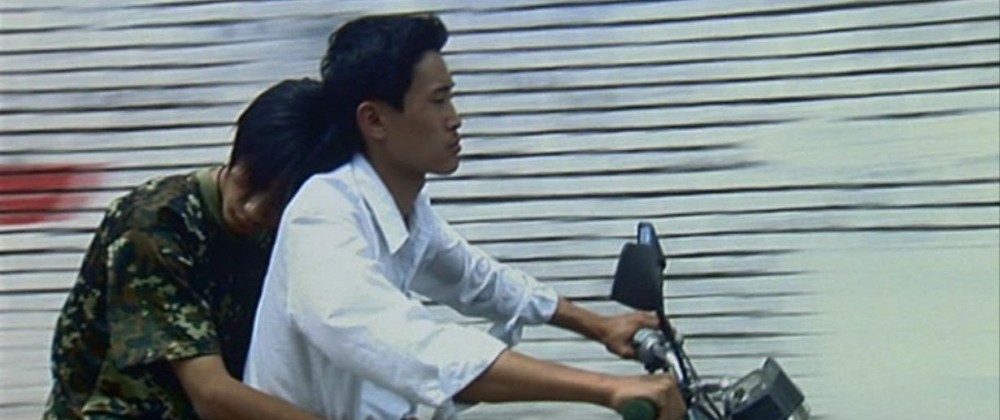
A glowing reputation precedes Jia Zhangke in global contemporary cinema. We can find three main pools of this excitement: within the stir of the international festival circuit (markets); in lecture halls and conferences (academia); or from those attempting to speak on his behalf (critics). Common to the three however, are aspects of his films that are so regularly eulogized. These include praise of their formal visual style and aestheticism, and the compelling sense of authenticity in his films, typified in words such as ‘vivid’ and ‘true’ courtesy of Jonathan Romney and Kent Jones. [1] This praise also extends towards what his films show its audiences, the content that the form aestheticizes. Romney chose to highlight this as ‘modern Chinese street life,’ while Jones is less specific in calling it ‘contemporary existence’; either way, what matters is to what the vividness and truthfulness is ascribed. [2]
What Romney and Jones alluded to is again divisible into two further specific elements. Firstly, it is China’s sprawling urbanity that Jia and his contemporaries, the so-called sixth generation, characteristically depict. Their common preference for location and collective mise en scène runs antithetically to that of their predecessors; the masters of the fifth generation, such as Chen Kaige, Zhang Yimou and Tian Zhuangzhuang who have defined their cinema in predominantly rural scenarios and locales. This environmental categorization was significant enough for Zhang Zhen to propose the term ‘urban generation’; an eponymously titled film retrospective and volume of landmark essays were since issued, consolidating the ‘indexicality’ of the urban elements to these films. [3] At the introduction to this volume, Zhang points to “the ubiquity of the bulldozer, the building crane, and the debris of urban ruins,” as key in the shared visual register of this movement. [4] The second sub-element not only implies the temporal or historical specificity of the landscape, the when in China now, but also the unavoidable supplementation of its ideology, the how of China now.
In this essay I aim to first discuss some of the implications and meanings of postsocialism in the terms of China’s contemporary urban generation of filmmakers. This ambiguous ideology not only permeates Jia’s two films discussed here, Platform (Zhan Tai, 2000), and its proceeding semi-documentary Unknown Pleasures (??Ren Xiao Yao??/, 2002); but also films made by his peers within the urban vanguard of People’s Republic of China (PRC) contemporary cinema. What I aim to address is the manner in which changes within China’s ideological landscape are inextricable with an accompanying aesthetic, which become simultaneously dependent on, and in contention with each other. In political terms, these contentions are positioned between the high communism of the PRC under Mao Zedong and the modernizing reforms undertaken by his immediate political successor Deng Xiaoping in his absence. I shall illustrate how ideological transitions of this type have deeply significant implications on the two films discussed; where one ideology proceeded to haunt its successor.
This essay then proceeds to relate debates within the film theory canon on utilized production techniques, treating a genealogy of differing realist aesthetics, and their relation to a particular philosophical reading of time. The classical theorists of realism, such as André Bazin, claimed that cinema is capable of delivering objective truths via aesthetic means, a stylistic ideal commonly referred to as cinema verité (cinema truth), reproducing reality that would be no different from what we see in real life. However, subsequent developments in poststructuralist theory complicated existing relations between cinema and their purported truths, reminiscent in some way of China’s own ideological transition. Newer, radical emphases on subjectivity soon made notions of objectivity in cinema problematic. [5] Since Jia’s films are so widely celebrated for their authentic value, this leads me to ask: how, then, have they overcome the obstacles regarding cinema and truths as posed by the poststructuralists? I aim to respond to this question in the latter part of this essay.
The Beginning of the Past in the Future
The cinema of Jia Zhangke belongs to a visual mode that can be described as postsocialist realism. This assertion draws on the Marxist relation of base and superstructure, that understands productions of art, cinematic or otherwise, as manifestations of superstructure. [6] These owe their existence to both restrictions and possibilities made available by the wider conditions of the base, or mode of production. Jia’s films demonstrate this connection with China’s ideological discourses at both conscious and unconscious levels. This part concentrates on the conscious level, I shall return to the flip-side of the unconscious level in the following part. I point to a directorial consciousness of this type simply due to the narrative content of his films. The decision to focus the films on the nitty-gritty vernacular of China’s socio-cultural landscape – especially in referencing, with fine detail, non-fiction historic events – supports this awareness. Following this, it would be valid to view the notion that appreciating Jia’s films is an appreciation of China’s modern ideological history.
Socio-ideological engagements can be witnessed from the outset in Platform, whose narrative spans from 1979 to 1989. These dates are corroborated by the depiction of factual events. The proverbial “torch” of the events are relayed a decade later, in narrative terms, in Unknown Pleasures which places the characters in a world interpellated in the same manner of historical referencing, only this time it is anchored around 2001. However, socio-ideological engagements are not pursued exclusively in the means of historical documentary. There is also an evident engagement, via more lyrical means, to history by allegory. Despite its own problematic presuppositions, there is an element of truth in Fredric Jameson’s famous gesture ‘all third-world texts are necessarily…national allegories.’ [7] In the context of Platform and Unknown Pleasures, would it be fair to consider China as a third-world country? Since the process of modernization has been at the forefront of China’s economic policies, especially during the period of these two films, Jameson’s statement remains valid.
This period of ideological change or zhuanxing (transformation) is allegorically dramatized as well as documented. More specifically the period immediately after the death of Mao and the fall of the Gang of Four. This was the period of Deng Xiaoping’s landmark reforms as announced at the Fifteenth Communist Party Congress of 1979. These reforms took on equal importance to established tenets of the Chinese Communist Party (CCP) canon such as “Mao Zedong thought,” and this new system was known as “Socialism with Chinese Characteristics” (Juyou Zhongguo Tese De Shehuizhuyi). Although postsocialism is partially defined as a successor of socialism, literally “after socialism has ended,” it is still understood by the very things it no longer is, or proposes to do. In this understanding postsocialism contains a non-synchronous aspect: it is a haunted ideology. Chris Berry pointed to this notion when he defined it as thus:
In the People’s Republic of China…postsocialism has more parallels with Lyotard’s postmodernism, where the forms and structures of the modern (in this case socialism) persist long after faith in the grand narrative that authorizes it has been lost. [8]
It is this momentum of a “lost past” that drives, and haunts, the narrative of Platform. During the pre-title sequence we are presented with both a documentary styled account of the past, embellished with an allegorical commentary on the socio-cultural future of its society. As observed by Xiaoping Lin, this sequence features the performance of a famous Communist musical play, “A Train Travelling Toward Shaoshan.” The choice of this play is poignant, as the reference to Shaoshan plays on the tacit knowledge that it is also the birthplace of Mao, and indirectly, the spiritual home of the Chinese communist republic. Opening the film here then, operates a reverse logic, as Lin puts it, ‘the troupe’s “journey” is allegorically a pilgrimage to China’s socialist past, not a tribute to the country’s capitalist present,’ a chronology that resembles a backward facing walk forward. [9] What Lin outlines here is that Platform is a film that could be one that identifies with nostalgia and pilgrimage.
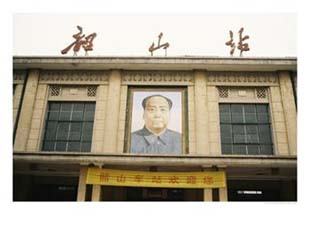
However, are all pilgrimages made out of nostalgia? While I agree that structurally Lin is correct, I am wary of its potential oversimplification. Nostalgia is often a sentimentalised longing for the past, often in an idealized manner, in some way a wistful romanticization of the past as somewhat better than the present. On closer inspection however, Platform does not seem to be this straightforward. Instead, the characters’ lives are interpolated with an ambivalence between both: a vividly remembered past, and during the present, an anxiety toward their unknown future. Platform is less a nostalgic journey than a haunted one; haunted by both the past and the future.
Emotionally, the haunting causes the characters unenviable discomfort, never singularly warmed by memories or excited by the unknown prospects of their future. This collective Jouissance is illustrated and made sense by the sequence immediately following the musical. When the troupe boards the coach after the performance and is counted in a roll call, the troupe provides us with an unusually reflexive moment, charged with ambiguity. This uncertainness is played out in the allegory of the train, first in performing the Maoist musical, then also in the troupe’s spontaneous mimicry of the train’s sound, while onboard the coach. Without cutting, the coach sets off in motion while the lights go out for the superimposed title sequence, and here we are reliant exclusively on the sound mix to understand what is happening.
Immediately discernible is the “Choo choo-ing” and chugging sounds of their locomotive mimic, but other sounds provide this sequence with its ambiguous dimension. We learn that their mimicry was part of their performance; the train is a metaphor for Chinese society, which arrives at the “platform” of Maoist ideology. Yet, onboard the coach we hear unsettled yelps of hysteria reflecting an uncertain expression of both excitement and fear. Is this second allegorical instance not an expression of the ideological unknown? It can be seen as the excitement of a liberal freedom but at the expense of dispensing with the safety of socialism. Jia’s translation of the traditional play into these new terms illustrate how realism has been revised, providing also a comment on the apprehensiveness in leaving the familiar. Much like the meaning of Platform and the title itself, it is left open to interpretation.
Indeed, other aspects of postsocialism, such as the embracement of the free market and the CCP’s re-alignment with globalisation, provide Unknown Pleasures with a pertinent premise. Topical references, not unlike the headlines of newspaper dailies, are found in numerous scenes. Principally focusing on the life of two drifters, Bin Bin (Zhao Weiwei) and his friend Xiao Ji (Zhao Qingfeng), we can find in depictions of their squabbling, boredom, desire and ineptitude vehicles for allegory. We can take the relationship between Bin Bin and his mother as an example; having long deceived his mother from the knowledge of his unemployment, Bin Bin appeases his mother’s wish for him to volunteer for the People’s Liberation Army. But before he finally relents, Bin Bin’s prolonged stubbornness towards his mother’s maternal insistence becomes synonymous with their relationship. At the moment Bin Bin yields we see more examples of Jia’s pseudo-documentary allegory. The narrative shifts its focus from dialogue exchanges to the inertia of the domestic mise en scène. In a deep focus shot of their cluttered living-room, a TV set relays an unmistakable diegetic cue – the muffled voice of US Secretary of State, Colin Powell – emerging from a news bulletin. The mother rewards Bin Bin’s for his cooperation, in a gesture that reveals a dry sense of irony, namely a can of Coca Cola. Perhaps this gesture is to be read as a satire of those in service to a maternal nation; that loyalty to its ambitions means a willingness to embrace its demands, one that desires cooperation with the flows of global capitalism and other potential risks.
This globalisation sentiment recurs in the portrayal of another quarrel. This second time Bin Bin chastises Xiao Ji (Zhao Qingfeng) after Xiao is physically beaten, in the wake of challenging Mr. Ren (Dao Xiao) over the affections of Qiao Qiao (Zhao Tao), the mutual object of male desire. Momentarily, the narrative engages with an overtly Freudian theme. Xiao is defeated in an Oedipal struggle for dominance with Ren, a powerful local gangster with a penchant for public displays of superiority. During the raucous discotheque sequence we see him mark his ownership of Qiao Qiao via an unsubtle symbolic gesture. Ren flaunts his phallus by publicly laying his gun on the dance-floor. The sequence ends with another masculine clash, but in a marked contrast of meaning. Bin Bin is fraught at the true extent of Xiao’s nihilistic lack of self-regard, and as if to resuscitate a sense of life’s worth back into Xiao, reprimands him with equal measure of violence and compassion.
Recapitulating the earlier narrative shift, we see a repeat of displacing the soundtrack from the mother’s domestic scene. This time our attention is drawn from the quarrel of Bin Bin and Xiao Ji to an outdoor television they stop at, poised at a live feed of the International Olympic Committee’s then pending selection verdict. In recreating the proud historic moment (July 2001) when Beijing was awarded the privilege of hosting the games, Unknown Pleasures is punctuated by real events of the historical world; re-staging the capital city’s enveloping celebrations only augments the realism of what is already believable. The message of this sequence could be read as a pacifying one: that infighting when seen within the wider context is counter-productive. As China has demonstrated on a truly global scale, their strategy to overcome internal conflicts is to promote their nation abroad as a unified whole. This is a view mirrored by the Economist in a recent assessment of the games:
The Olympics themselves are naturally a chance to show off China’s rapid modernisation to the outside world. But far more important is the audience at home, and the opportunity to prove just how much China’s Communist rulers have achieved in restoring the country’s prestige. [10]
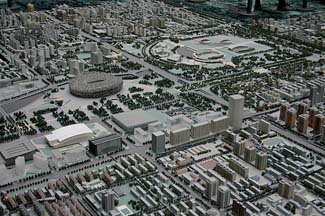
These epic investments –an estimated monetary cost totaling US$ 67 billion [11]– to facilitate what has been described as the “greatest non-war event in humanity,” illustrate the scale and seriousness of China’s ambitions to modernize. In digesting these facts and grand designs, it becomes possible to appreciate the vast changes intended by the Communist leadership. Never before has a ruling body mobilized such phenomenal quantities of capital in China’s long history, let alone a communist one, albeit in the manner of a capitalist mould; the unlikely logic of postsocialism is the attempt to behave in precisely this way. Seemingly incompatible ideologies are combined, while under the scrutiny of the global Olympic Stage, its instigators attempt to clothe the spectres of a Maoist past in the cut of a neoliberal costume.
However, this is not to say that either film promotes the modernizations as a desirable success. In fact, they tend to criticize the utopian schemes by drawing attention to genuine failings incurred by this revised ideology. All have not enjoyed the successes of modernization, in particular those consistently at the focus of Jia’s films, the marginalized subjects of society. This is criticized in Platform during two important sequences. First, in the portrayal of the free market hostility, in a scene where the troupe are assaulted for their curiosity in a visit to a then experimental trade market; second, in highlighting the immorality of employees in the newly privatized labour market, in the scene where Mingliang’s illiterate cousin (Han Sanming) is required to absolve all accountability of his personal welfare in a contract to labour down a coal mine. The film criticizes the national modernizations with genuine weight and sting. Both Platform and Unknown Pleasures furnish their mise en scène extensively with unfinished roads and construction sites, suggesting the lack of a clear agenda or direction for where they should lead. This sensory connection with a world not only in ideological but also rugged physical change is what these films are so successful in conveying. To paraphrase a revolutionary slogan from Jean-Luc Godard’s La Chinoise (1967), Jia Zhangke seeks to confront invisible ideas with gritty images.
The Constructed Xianchang
Having discussed how Jia’s films are symptomatic of contending ideologies, of a major transition within China’s contemporary landscape, I will now extend this logic to an appreciation of aesthetics in similar contention, namely that of realism. By engaging with this textual argument, this essay seeks to offer both a genealogical and aesthetic appreciation of these two Jia Zhangke films. The urban generation filmmakers, of whom Jia belongs, are categorized by their adaptations of realism, where realism as a cinematic stylization requires the active discernment of how their films should look, sound and feel.
Similar to the case of ideologies in genealogical progression, there is also a contention at play within style and aesthetics. What realism means to the urban generation is different, or even dialectically opposed to realism as understood by much of the fifth and more so, fourth generation filmmakers. This contention for the urban generation is a conscious urge to be radically different from those before them: a consciousness of what their stylization means, and consequently the concern over their choice of aesthetic. Again, the connection here between aesthetics and society draws on the Marxist understanding of superstructure and base respectively. As Marx put it, ‘(i)t is not the consciousness of men that determines their existence, but their social existence that determines their consciousness.’ [12] The implication being that consciousness can be equated with aesthetics, directly determined by the socio-economic conditions of the society.
Thus, a radically different base determines a radically different superstructure. Realism determined by the Maoist republic will be radically different to realism in postsocialist China. Jean-Louis Comolli supported this type of relation in terms more specific to film theory, particularly in his critiques of Bazin and Jean Mitry. Comolli argued that innovations made in the medium offered by economic factors allowed, produced and attributed meaning to its resultant aesthetic. [13] In the changing context of China, this new realism is widely referred to as xianchang (on the scene) by urban generation filmmakers, including Jia, as well as scholars on the subject. [14] As such, Xianchang is a contrasting departure from its dominating precedent: the didacticism of melodrama and Opera in the form of Socialist Realism. Xianchang in this respect shares much in common with the emergence in post Second World War Italy of neorealism, not only in terms of style but necessity and ethics.
However, in spite of the immediate differences between realism(s) there exist some important parallels. On the surface Platform and Unknown Pleasures are vastly different to socialist realist classics, such as Cui Wen and Chen Huaiai’s Song of Youth (1959). Yet, what can be said of both projects is a shared objective, that of showing the truth of their socio-economic condition. Both types of realism exercise the common objective of constructing a cinema that mirrors life. Whether a film receives the blessing of the authorities or not, this objective remains the same. Even if truths themselves change, the desire to show them does not. Perhaps what obscures this notion are “propaganda” stigmas attached to the value of films produced in the name of socialist realism. Such myopic views serve only to continue the myth that realism is incompatible with romanticism.
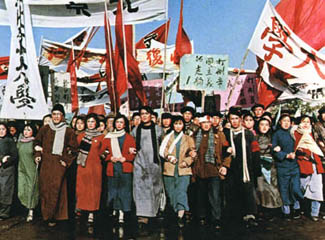
At this point it is useful to recall the definition of socialist realism at the time of its inception in order to examine its ideals. Particularly vocal in his enthusiasm and support of the aesthetic was Zhou Enlai, who stressed that ‘socialist realism is the combination of revolutionary realism and revolutionary idealism.’ [15] Such an idealized account of socialist realism is open to skepticism upon its reception in society. At its height, socialist realism demanded that public-ness was king, and that the decadence of private individualism was to be scorned. Would this rigorous ideal be what the Chinese youth actually desired? Ban Wang’s account of its reception, as cited by Zhang suggests that it was possible:
Communist culture was attractive precisely because it recognized “the importance of the individual’s libidinal pleasure” and successfully constructed a new psychological process. [16]
What is needed here is a clarification of this “new psychological process.” This process is precisely the transference between the ideals of the aesthetic and the desires of its audience, in that socialist realism provided its audience with the truth that was not only demanded of them but also desired by them.
Is xianchang then, not offering an identical relationship between ideologically charged realism –one of a postsocialist variety– and its similarly truth hungry audience? The xianchang aesthetic in this sense is not so much one of ‘getting real,’ as posited by Chris Berry, who equates this imperative with the need for postsocialist filmmakers to wake up and smell their condition. [17] Instead, and consistent with Comolli, the imperative should effectively be modified to “keeping it real,” inciting aestheticians to update how they reflect an already changed society. Aestheticians have already proved that they were au fait with cinematic reflection and only needed to continue to do so, rather than needing to understand the need to reflect. By this it follows that the realism of the urban generation – in their desire to keep with the real – is as much one of romanticism as that of Zhou Enlai’s Maoist notion. In this respect, realism is romanticism.
Jia has made explicit his thoughts on xianchang realism as romanticism, or idealization. His regard for cinematic reality and truth as mere construction was clarified when he conceded that ‘[t]here is no absolute objectivity, there is attitude, and through this attitude, there is an ideal.’ [18] He has also acknowledged several key influences on his aesthetic, citing a mixture of European and Asian stylists such as Hou Hsiao-hsien, Yasujiro Ozu, Robert Bresson and Vittorio De Sica; from whom he draws a common grammar of long contemplative takes and frame compositions that feature deep focus. [19] Beyond identifying what he chose to adopt, the question here is: what does he intend to utilize these cinematic formulae for? Although there are many ways to theorize cinema of this kind, I believe that the insights made by Gilles Deleuze, in particular his concept of the “time-image,” are of great benefit.
Deleuze’s time-image offers a workable connection between many parameters issued in this essay. His outline of the cinematic depth of field or deep focus draws out some unexpected implications:
The special quality of depth of field [deep focus] would be to reverse time’s subordination to movement and show time for itself. We are not saying that depth of field has the exclusive rights to the time-image…Our point is that depth of field creates a certain type of direct time-image that can be defined by memory, virtual regions of past, the aspects of each region. This would be less a function of reality than a function of remembering, of temporalization: not exactly a recollection but “an invitation to recollect….” [20]
Deleuze first points out that time is liberated from movement in deep focus compositions, in order for the viewer to explore in the image that which can only be crystallised in this liberation. Second, that this liberation of time offers a unique understanding of cinematic reality. This uniqueness is constituted –in the distinction – between cinematic experiences of “reality” and the experience of “recollection.” In that, images of reality function in the domain of memory, and that reality becomes comprehensible in the past, or in the act of recollection. This remains the case if the image is registered in the immediate past, as a result of a short take or shallower focus; or by contrast, in deep focus and longer takes that require greater acts of recollection. We can read the aesthetic of Jia then as a Deleuzian one, since Jia often promotes this type of relation between deep focus shots and an uninterrupted empathy with time, and that he insists on pushing images of reality into the register of memory. In this sense, if we return to the opening scenes of Platform, we can understand them as, again, not sentimentalisation, but an invitation to recollect, to revisit aspects of “regions of the past” but in the present and the future.
With a close reading of Platform it is possible to find several more invitations to recollect. In one particular scene Cui Mingliang (Wang Hongwei) recites Deng Xiaoping’s then recently announced reforms, namely Sige Xiandaihua (Four Modernizations) “Agriculture, Science, Industry and National Defense” in a bid to impress his difficult troupe leader. However, we can also understand this as a reflexive moment, beyond the benefit of the narrative and as a historical testimony for audiences of the future. Platform serves as a capsule of Deleuzian “recollection,” memorized for the potential to better understand future events as they are to unfold, by recording landmark ideological changes that would bear a direct causal influence on future socio-reality. Perhaps this is why Unknown Pleasures does not offer the same sense of authority that Platform does. Which is not to say that Unknown Pleasures does not make sense of what it depicts; but rather that, being historically contemporaneous with its production, Unknown Pleasures ontologically has a shallower “memory.”
Like Platform, Unknown Pleasures makes extensive use of recollection and time-image, but in differing proportions, and with a distinct dramatic effect. Platform is laden with dramatic irony. As an audience we are familiar with the historical events that unfold for the characters, but Unknown Pleasures plays on the contemporary unfamiliar of both the characters and audience. Also, the distance between a reduced recollection and lengthened time-image is accentuated. As Jason McGrath observed: ‘the average shot length…further expanding to nearly a minute and a half…including almost painfully slow and deliberate pans,’ can be described as bewildering or even uncomfortable, but this is intentional. [21] Unknown Pleasures encourages this empathy with the ambivalent future the protagonists experience; indirectly, we experience the same time the marginal members of the society experience. Exemplar of this notion is Xiao Ji’s solipsistic motorcycle scene, where in one long take we see Xiao struggle to ride his scooter up a desolate hill, and at each attempt the modest scooter engine cuts off, as if overwhelmed by Xiao’s demands. This action is repeated as the camera steadfastly focuses on the banality of this task. After nearly three minutes of screen time, on the eighth attempt he finally succeeds; in hindsight the scene and task is completed devoid of incentive or recourse. More than being an invitation, the scene is an imposition on audiences to empathise with the inertia, absurdity, and bewilderment of Xiao’s moment.
Underlying the austere realism of the two films are formal elements that reveal the method of its construction. There is a structural parallel in two sequences, one from each film, that upon comparison reveals, beyond coincidence, the replicability of xianchang realism. Both sequences depict the ending of a romantic association and a contemplative emphasis on alienation, where one party is abandoned in a seemingly inescapable environment, while the other breaks free. Xiaoping Lin has discussed the first example from Platform in terms of Confucian filial obligations, where in spurning the opportunity to tour with the troupe Yin Ruijuan (Zhao Tao) parts with Mingliang to tend to her ill father. [22] The scene runs close to five minutes in a single take, but the majority of it is consumed in stillness, punctuated only with sparse dialogue and the ambient sound of marching soldiers; it is as if the invisible soldiers signify Ruijuan’s imprisonment. Similarly, Mingliang’s exit is suggested in the same sound mix: after leaping from the boundary walls and out of the frame, he escapes the garrison of the mise en scène. Listening intently to an offscreen transport announcement Ruijuan, framed in an even deeper focus shot, is visually and metaphorically diminished in stature.
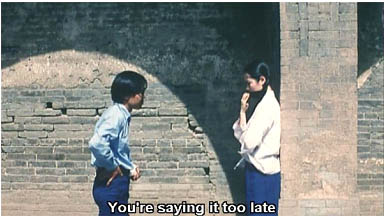
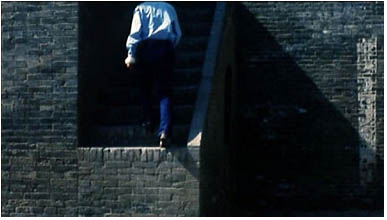
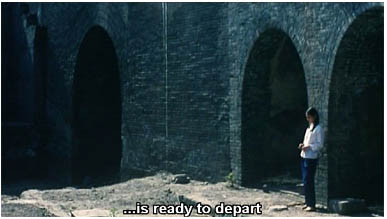
Unknown Pleasures mirrors this sequence with the same pattern of signifiers, only it is a minute longer and features even less dialogue. Bin Bin’s girlfriend Yuan Yuan (Qing Fengzhou) leaves their hometown in pursuit of better prospects, making mention of China’s recent membership with the World Trade Organization. Bin Bin’s alienation could be viewed as a pitfall of China’s globalized ambitions, and that not all are able to partake in the new competition. Their final rendezvous at the communal hall echoes the film’s opening, where Bin Bin’s first appearance portrayed his drifting ennui at its height. Mirroring the pattern established in Platform, Bin Bin is sitting at a booth looking on as Yuan Yuan lingers in the hall; Yuan eventually cycles through the doors and out of shot. The familiar transport announcement pronounces her freedom as Bin Bin is consigned to her past, completing the pattern in an elegant naturalistic manner.
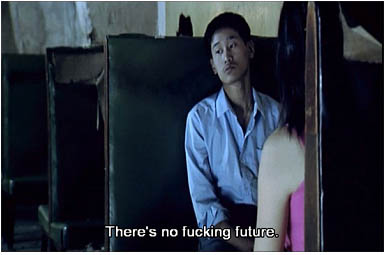
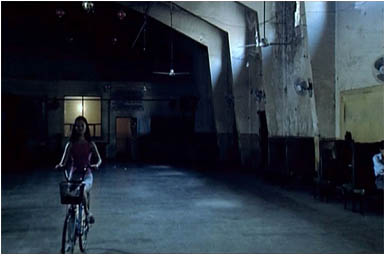
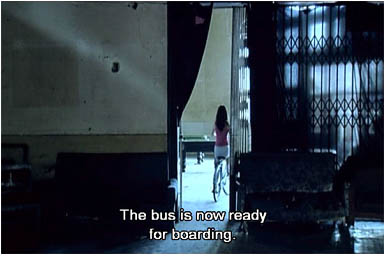
Where is the Truth?
As I have shown, realism in these two films are the result of meticulously prepared and executed construction. The form of its aesthetic construction was determined by the socio-economic conditions of contemporary China, precipitating its ideology. I have not shown this in order to criticize their naturalistic intentions, or to dismiss the achievement of a xianchang feeling; such a conclusion would be a misunderstanding. On the reverse side of this analysis is my argument that there is real value in the method and necessity of the construction. This was achieved by drawing out essential relations between aesthetics and their determinants, but it is precisely these relations that is of value. Appreciating the relations allows for an understanding of how the process of constructing realism is of value. Which is also the reason why the theories selected to identify these relations are important.
If the goal of realism is show how the real looks and sounds, then ironically, at its logical extreme, realism undermines itself. This can be illustrated if we consider cinematic realism at its zenith as a cinema of Trompe-l’œil, the hyper-realistic painting style so highly favoured in Renaissance Europe. These were often two dimensional images which looked as true to life as the tactile three dimensional subjects themselves, but the irony is, that these images relied on illusions, false perspectives and other trickeries for them to function. In fact, the term Trompe-l’œil in a literal translation from French is “trick the eye.” This is close to what Comolli referred to as: ‘ “total cinema” –the complete illusion and duplication of life, including sound, color, relief, etc.,’ [23] which became immediately vulnerable to his criticisms as outlined earlier. His reversal of the old Bazinian tenet of “reality faithfully captured by technique” [24] was delivered in the following way:
Contrary to what the technicians seem to believe, that restoration of movement and depth are not the effects of the camera, but the camera is the effect –the solution– to the problem of their restoration’ [my emphasis]. [25]
In identifying the medium as the effect, not the effect itself, Comolli inadvertently offered a solid reasoning for appreciating ideology and its aesthetic. Since I have been examining the value of a determining ideology, then all instances, or “effects” in the aesthetic are composed of that value; the more tainted by it the better. In this sense, the ‘truths’ of Jia Zhangke’s films are to be found within the discourse of the falsities they propagate; falsities rich in a postsocialist realism and poeticism.
Endnotes
1 Jonathan Romney and Kent Jones taken from the Artificial Eye press release of Unknown Pleasures and Xiao Wu. Available at: Artificial Eye.
2 Ibid.
3 Twelve selected films were screened between February and March 2001 at the Harvard Film Archive, the Walter Reade Theater and in Washington’s National Gallery of Art, under the title ‘Urban Generation’.
4 Zhang Zhen. “Bearing Witness, Chinese Urban Cinema in the Era of ‘Transformation’ (Zhuanxing).” The Urban Generation. Durham: Duke University Press. (2007), p.3.
5 An informative account of this dispute by Peter Matthews can be found in Sight & Sound online. Peter Matthews. “The Innovators of the 1950-1960: Divining the Real.” Sight & Sound. [Internet] August 1999. Available at: [accessed December 2007], (1999).
6 According to Marx a society can be broken down into its base, which is the overall economic system (capitalism, socialism, communism, etc.), and the superstructure, which is the full range of the institutional systems (religion, education, art, the legal system, etc.). Within this breakdown the superstructure is dependent on and shaped by the base.
7 Frederic Jameson. “Third-World Literature in the Era of Multinational Capitalism.” Social Text. Autumn, 65-88, (1986). p.69.
8 Chris Berry. “Getting Real: Chinese Documentary.” The Urban Generation. Durham: Duke University Press, (2007), p.116.
9 Xiaoping Lin. “Jia Zhangke’s Cinematic Trilogy: A Journey across the Ruins of Post-Mao China.” Chinese-Language Film: Historiography, Poetics, Politics. Edited by Sheldon Lu and Emilie Yeh. Honolulu: University of Hawaii Press, (2005), p.197.
10 Stephen Long. “China’s great game.” The Economist. The World in 2008 edition, (2007), p.13 Alternatively a version is available online at: The Economist.
11 Wu Chen. “View from China: What Price Glory?” CFO Magazine, (2007) [Internet] Available at: CFO Magazine.
12 Karl Marx. “Preface.” A Contribution to the Critique of Political Economy. (1859) [Internet] Available online.
13 Jean-Louis Comolli. “Technique and Ideology: Camera, Perspective.” Depth of Field [Parts 3 and 4]. Columbia: Columbia University Press, (1986), p.432-438
14 Xianchang (..) or “On the Scene” is used by Jia Zhangke, albeit in translation, in an interview with Stephen Teo published at Senses of Cinema. Also, Augusta Lee Palmer has used the pinyin version of xianchang extensively. The term is also used by Chinese journalism in denoting a live report “on the scene.”
Stephen Teo. “Cinema with An Accent – Interview with Jia Zhangke, director of Platform.” Senses of Cinema. [Internet] Available at: Senses of Cinema [accessed December 2007] (2001).
Augusta Lee Palmer. “Mainland China: Public Square to Shopping Mall and the New Entertainment Film.” Contemporary Asian Cinema: Popular Culture in a Global Frame. Oxford: Berg Publishers, Edited by Anne Cieko, (2006) P.144-168.
15 Yinjin Zhang. Chinese National Cinema. New York, London, Routledge. (2004), p.202.
16 Yinjin Zhang, p.203.
17 Chris Berry, p.115-116.
18 Stephen Teo, Ibid.
19 Kevin Lee. “Jia ZhangKe.” Senses of Cinema. Senses of Cinema Inc., (2003). [Internet] Available at: Senses of Cinema. [Accessed December 2007].
20 Gilles Deleuze. Cinema 2: The Time Image. London: Continuum. (1982), p.105.
21 Jason McGrath. “The Independent cinema of Jia Zhangke: From Postsocialist Realism to a Transnational Aesthetic.” The Urban Generation. Durham: Duke University Press. (2007), p.107.
22 Xiaping Lin, p.199.
23 Jean-Louis Comolli, p.433.
24 Jean-Louis Comolli, p.434.
25 Ibid.


